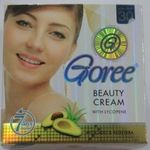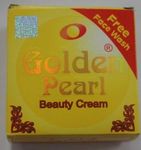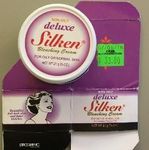MERCURY-ADDED SKIN-LIGHTENING CREAMS: Available, inexpensive and toxic November 2018 - The European Environmental ...
←
→
Page content transcription
If your browser does not render page correctly, please read the page content below
MERCURY-ADDED
SKIN-LIGHTENING CREAMS:
Available, inexpensive and toxic November 2018
Executive Summary
The toxic trade of often illegal mercury- In Mauritius one out of 15 creams was
added skin-lightening products is a global crisis found to contain more than 1 ppm (7%). 19% of
expected to only worsen with skyrocketing the Philippines’ samples exceeded 1 ppm
demand, especially in Asia, the Middle East and mercury content, while the Thai samples reached
i
Africa. Consistent with other research, a new Zero 63%. Finally, in Trinidad and Tobago, 20% of the
Mercury Working Group (ZMWG) study indicates samples tested also exceeded the Minamata
that a significant percentage of skin-lightening Convention limits. Sampling was carried out
creams sold worldwide contain dangerous levels following established protocol in 2017 and
of mercury. further streamlined in 2018.
In 2017 and 2018, 338 skin-lightening Mercury is well known to international
creams from 22 countries were collected by agencies as toxic and a risk to human health.
seventeen of our non-governmental organization Regular use of skin bleaching or skin-lightening
(NGO) partners from around the world and creams and soaps containing mercury can lead to
tested for mercury. 34 creams (10% of the rashes, skin discoloration and blotching. Long-
samples) had mercury concentrations ranging term exposure can have serious health
from 93 - 16,353 parts per million (ppm). These consequences, including damage to the skin, eyes,
levels significantly exceeded not only the legal lungs, kidneys, digestive, immune and nervous
iii
standard established by countries that regulate systems.
these products, but also the provisions set forth Out of the 22 countries where sampling
in the Minamata Convention disallowing after took place, 15 have legislation or other
2020 the “manufacture, import or export” of requirements consistent with the Minamata
ii
cosmetics with a mercury content above 1 ppm. Convention provisions. Out of the 7 countries
In Bangladesh, almost 50% of the creams where high mercury samples were found, only 4
sampled and tested had mercury content have legal requirements prohibiting creams with
exceeding 1 ppm. In the Dominican Republic and more than 1 ppm mercury content.
Indonesia it reached 33% and 31% respectively. Our research demonstrates that
hazardous substance restrictions and
accompanying risk communication strategies in
many countries are incomplete and/or
inadequately enforced, thereby raising the risk of
health effects, primarily to women.
As countries strive to comply with the
1ppm mercury content cutoff provision pertaining
to cosmetics in the Minamata Convention on
Mercury, a range of measures are available to
reduce exposure to mercury from skin lighteners,
including renewed opportunities for collaboration
with all levels of government and civil society:1) New laws or regulations. The Minamata Convention’s ban on the manufacture, import and
export of mercury-added skin products after 2020 may result in adoption of new national
legislation and enforcement programs. Local ordinances can also play an effective role in targeting
specific venues of production and sales, raising awareness and promoting measures that can
protect consumers.
2) Better enforcement. Government officials, and in particular customs officers, should be provided
with the training and resources to control their national market and intercept cosmetics that violate
the Convention, as most may be imported. Several relatively simple and efficient screening
technologies can be used to screen products for mercury. The report presents measurement
protocols for the X-ray fluorescence (XRF) spectrometer or analyzer, an affordable screening
instrument already in use by many customs services and government authorities for doing
compliance checks.
3) Non-discriminatory advertising. Many of the social pressures that underlie the widespread use of
skin-lightening products are amplified by the media. Countries should adopt advertising guidelines
that ensure advertisers do not reinforce negative social stereotyping on the basis of skin color, akin
to those adopted by the Advertising Standards Council of India (ASCI) in 2014.
4) Harmonization of enforcement efforts. With an increasingly global supply chain, and widespread
sales over the internet, governments should coordinate efforts by posting and maintaining a
continuously updated list of illegal products. Such up-to-date postings on UN agency and Interpol
websites would greatly assist regulators around the world, as well as civil society, to identify illegal
products in the marketplace.
5) Targeted monitoring of the marketplace. To the extent possible, monitoring of the marketplace
should be conducted to investigate and prevent the proliferation of hazardous or illegal domestic
and cross boundary trading practices. Market surveillance should target especially internet sales as
well as small stores that sell creams to specific ethnic groups or immigrant communities.
6) Accurate labeling. To discourage the marketing of unregulated products, all cosmetics should be
labelled according to national regulations, with accurate information on the ingredients, producer,
address and country of manufacture. Sellers should also provide documentation verifying that
products meet all relevant regulations, and that the labeling language is understandable in the
destination country.
7) Education. While the deeply rooted practice of skin-lightening will not change rapidly, mercury
exposure via cosmetics poses serious health but also environmental and indoor air quality risks.
Governments, health practitioners and community leaders should initiate culturally-appropriate
campaigns about potential risks to people who use skin-lighteners.
8) Popular enforcement. Civil society groups are well placed to identify suspect products in the
marketplace, especially with the use of XRFs or similar screening tools.
The following tables list the 34 skin-care products containing excessive mercury identified in seven
countries during research in 2017 and 2018:
Report available at:
http://www.zeromercury.org/index.php?option=com_ph
ocadownload&view=file&id=253:zmwg-report-mercury-
added-skin-lightening-creams-
available_inexpensive_and_toxic&Itemid=70Skin care products with excessive mercury content (purchased in 2017)
Country of Country of Brand name Mercury
purchase manufacture [ppm]
Bangladesh Pakistan New Face Whitening Cream 16,000
Bangladesh Not indicated Noor Herbal Beauty Cream 16,000
Bangladesh Bangladesh Lata Herbal Skin Bright Cream 8,500
Bangladesh Pakistan Chandni Whitening Cream 6,800
Bangladesh Pakistan White Pearl Plus Cleanser Cream 93
Dominican Dominican Crema Blanqueadora Whitening Cream 260
Republic Republic Lisso
Mauritius Pakistan Chandni Whitening Cream 14,000
Philippines China Jiaoli Miraculous Night Cream 1,200
Philippines Hong Kong Glutathione Grapeseed Extract Whitening / 750
Anti-Aging Night
Philippines China Jiaoli Miraculous Day Cream 500
Trinidad/ Tobago Jamaica Non-Oily Deluxe Silken Bleaching Cream 8,300
Note: Mercury content analysed by Enthalpy Analytical Laboratories (California, USA) using Cold
Vapor Atomic Absorption Spectroscopy (CVAAS).
Skin care products with excessive mercury content (purchased in 2018)
Country of Country of Brand name Mercury
purchase manufacture [ppm]
a
Indonesia Not indicated Collagen Plus Vit E Night Cream 7,111
a
Indonesia Philippines RDL Whitening Treatment Night Cream 8 5,958
Days Treatment
a
Indonesia Malaysia Temulawak Cream (Night Cream) 3,059
a
Indonesia Not indicated Natural 99 Vitamin E Plus 2,018
a
Philippines Pakistan Goree Beauty Cream 10,576
a
Philippines China Jiaoli Day Cream 1,693
a
Philippines Hong Kong Gemli Glutathione Grapeseed Extract (Day 1,565
Cream)
a
Philippines China Jiaoli Night Cream 365
a
Bangladesh Pakistan Goree Beauty Cream with Lycopene 16,353
a
Bangladesh Pakistan Due Beauty Cream 11,940
a
Bangladesh Taiwan Huayenong - Bird's Nest Cosmetology 10,749
a
Bangladesh Pakistan Golden Pearl Beauty Cream 9,648
a
Bangladesh Pakistan Faiza Beauty Cream 9,053
a
Bangladesh Taiwan Egg White and Cherry 7 Days Specific 5,271
Eliminating Freckle Whitening Cream
a
Bangladesh Taiwan Green Tea Whitening Anti-freckle Cream 5,068
a
Bangladesh China,via Temulawak New Beauty White Cream 1,884
Malaysia (Night Cream)
a
Bangladesh Pakistan Hoor! Whitening Cream 1,083
a
Bangladesh China Jiaulihuic Hunsu Jioli Miraculous Day and 711
Night Cream
a
Note: Mercury content analyzed by Quality Assurance & Control Systems Laboratory (Greece)
using Hydride Atomic Absorption Spectroscopy (HAAS)b
Thailand Thailand Cleome White 8,300
b
Thailand Thailand O White Whitening Cream Premium 7,300
Package
b
Thailand Thailand White Rose Whitening 6,500
b
Thailand Whitening Pearl and Snow Lotus Cream 4,300
b
Thailand South Korea Whitening Ginseng and Pearl Cream 2,100
b
Note: Mercury content analysed by Enthalpy Analytical Laboratories (California, USA) using Cold
Vapor Atomic Absorption Spectroscopy (CVAAS).
Some of the high mercury creams identified during our study
Funded by:
Swedish International Development Agency (SIDA) via the Swedish Society for Nature
Conservation (SSNC)
The Sills Family Foundation
The Garfield Foundation
The LIFE programme of the European Union
This communication reflects the authors’ views and not necessarily those of the funders
Notes:
i
Global Industry Analysts, Inc.
(https://www.strategyr.com/MarketResearch/Skin_Lighteners_Market_Trends.asp)
ii
Minamata Convention
(http://www.mercuryconvention.org/Convention/Text/tabid/3426/language/en-US/Default.aspx)
iii Agency for Toxic Substances and Disease Registry,
Public Health Statement for Mercury (March 1999)
www.atsdr.cdc. gov/PHS/PHS.asp?id=112&tid=24You can also read



























































